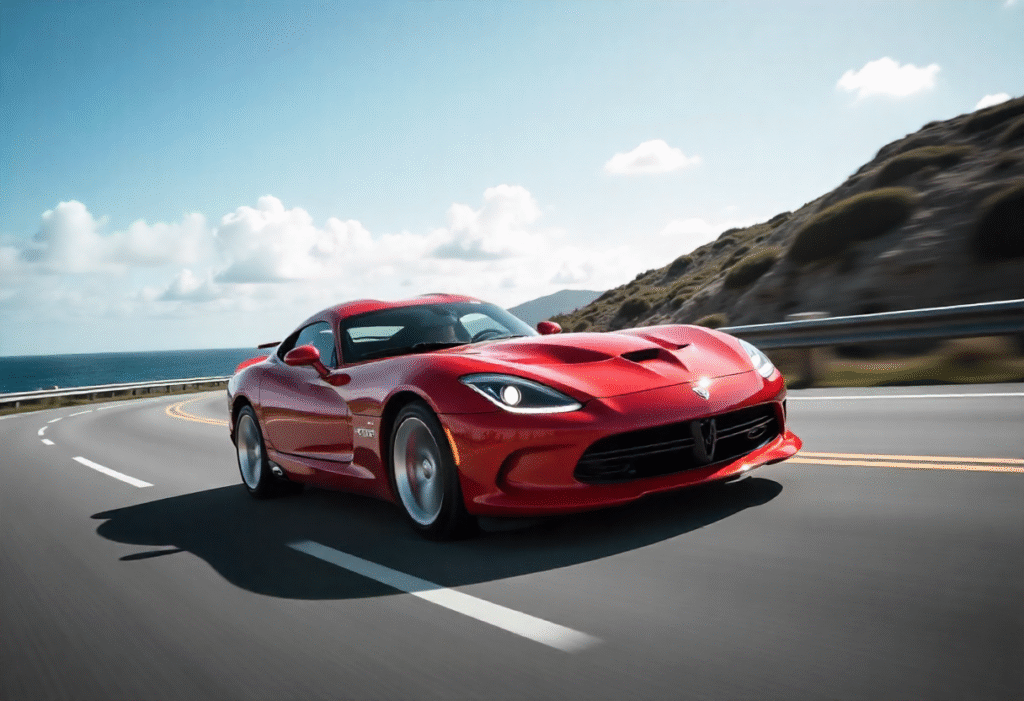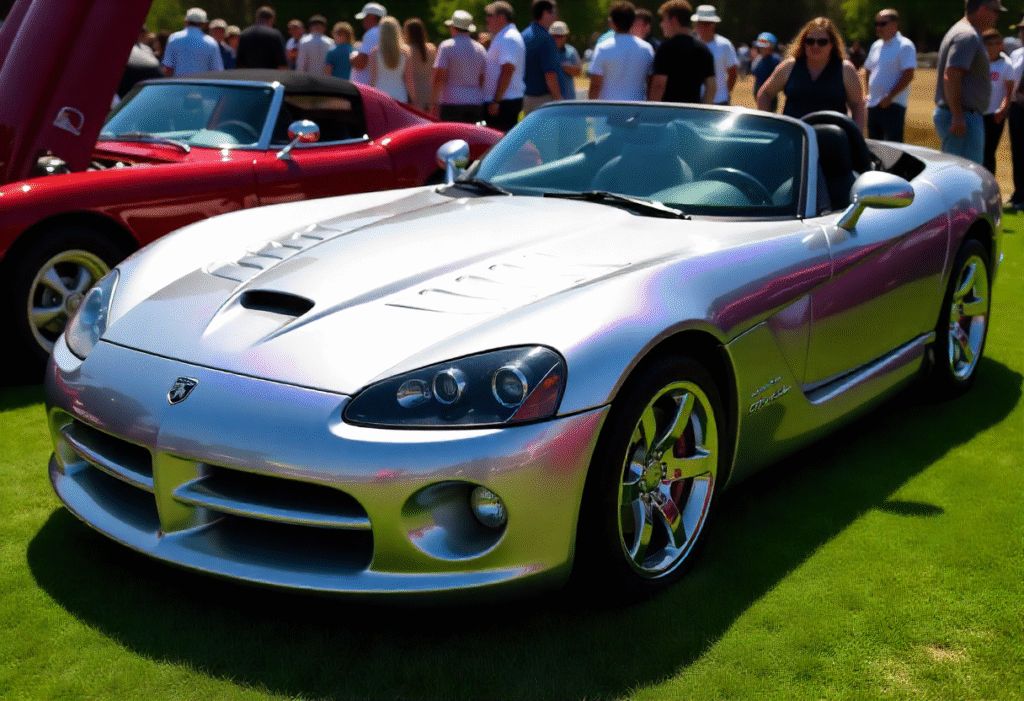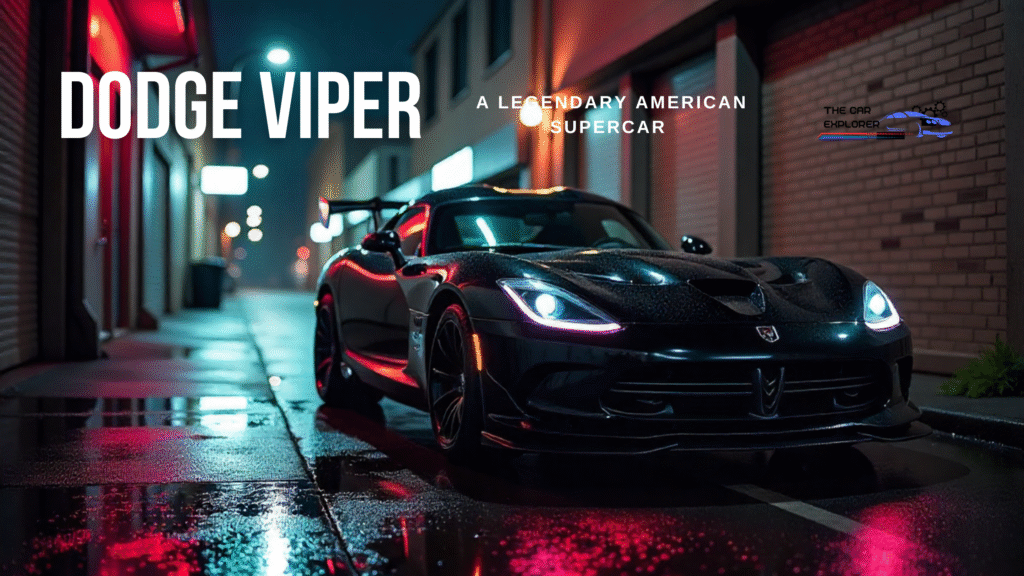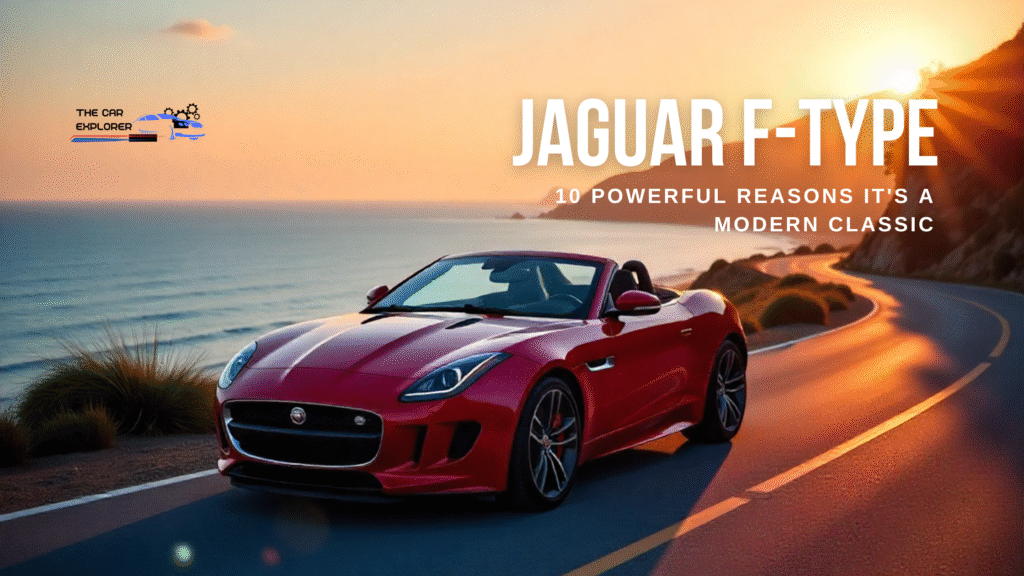Table of Contents
Introduction

The Dodge Viper has a place of honor in American automotive history since it is a powerful car with commanding craftsmanship and handling characteristics as well as very thrilling performance power. When it first appeared, the Viper became an eternal classic of American muscle cars, enthralling auto zealots all over the world. The authors research every stage of the history of Viper and its performance statistics and theory of design, along with studying its impact on the culture of supercars that keeps in its memory.
History of the Dodge Viper
The first Dodge Viper concept was introduced into the world of auto shows at Detroit in 1989 and instantly distinguished itself with appreciation among the people who appreciate cars. Viper was being manufactured by the Chrysler Corporation as a focus on speed sports car during the time when the company was owned by Dodge. When the chief designer of Chrysler, Tom Gale, as the vice president of the company, made the first design of the Viper framework, it was after he had sought to reinstate the American roadster essence by using contemporary performance principles.
In 1992, Dodge began production of its Viper RT/10 model. The car had deprived the similarity among other sports cars in those days because it came in a fierce new form of design concept, which instantly attracted all eyes. The model of that time had an engine capacity of a V10 motor, 8.0-liter, providing an output of around 400 horsepower, a huge amount as compared to other vehicles of that time. Due to its commitment to high-velocity speed, not to mention its strong engines and shameless design features, Viper became popular among enthusiasts at first glance.
As it evolved through time, the Viper had several versions that kept adding performance capacities to it. The Viper resulted in three main models after the RT/10 had shown technical advancement of the American high-performance sports cars.
Dodge Viper Design – Bold, Fearless, and Unique
The unique design remains a distinctive feature that defines the Dodge Viper. The car began with one simple goal of proposing power and aggression as the main aspects of its design. Its long hood and wide body, in combination with pared-down comfort features, made the vehicle stand out among all others moving across the streets. The Viper was a gym car design offering muscular body features in its powerful, sharp shapes and aggressive-looking front grille that appeared to show sudden readiness to attack.
The model of the outer automobile car body demonstrated its purpose to present sporting skills. Low, wide proportions of the Viper enabled it to emerge prominently on every road. This front region was marked by an intimidating wide grille and strong headlights that ensured the development of a strong, intimidating design. The taillights of the Viper were round, along with other strong fender designs, which enabled it to be easily recognized on the road by other drivers.
With the Viper, the developers kept the cost of luxury amenities out of their design priorities, opting to focus on speed and driving performance as the main design goals. Automotive necessities provided the sports car with the requisite characteristics, but high-end users would desire extra facilities that were lacking in the car. Its cabin features had a simple design of leather upholstered bucket seats and the inclined back of the seats that provided a driver-road relationship.
Performance – Power Under the Hood
Powerful performance has always been an understatement in the history of the Dodge Viper product line. In its early release in 1992, the first-generation Viper came with an 8.0-liter V10 engine that produced 400 horsepower and impressed the market then. This 6-speed manual transmission combined with the engine V10 gave drivers a connected feeling and mechanics of pure drive that has since engendered a following of lovers today.

During its development, Viper was fitted with improved powertrain systems. In the second-generation Viper release of 1996, a newer 8.0 L V10 engine had shown up, producing approximately 450 horsepower. Following the launch of the second generation, the GTS coupe became a favorite of fans due to its improved handling features, as well as advanced stability features.
Viper made its third generation between 2003 and 2010, and its base model had 500 horsepower at an 8.3-liter V10 engine, with even more power options added to this base model. Viper was even more of a road and race track dominating vehicle due to its power boost.
The Viper ACR (American Club Racer) was the final gen of the car that got some significant performance-increasing functions, such as improved handling dynamics and improved braking capabilities, and power-saving drag. Active aerodynamics, and use of lightweight materials, and improved suspensions were major modifications that gave track performance to this version of the ACR. Elegant changes incorporated into the Viper turned the Viper into an excellent and high-performance road competitor, and the ability to run track speeds that rival top supercars.
One of the fastest places since the introduction of the Viper to date among all the American-manufactured vehicles is due to its exemplary acceleration and velocity capacity. The thresholds of the Viper ACR model were 206 mph and less than 3.5 seconds to speed up 0 to 60 mph, and this put the 0 to 60 mph to its top among supercars. Viper managed to attain its superb performance with the incorporation of a lightweight chassis and its global rear-wheel drive system, and by providing the largest tires to provide the most desirable conditions in-car driving.
Evolution of the Dodge Viper Models
Dodge Viper has grown through various stages of generations based on the knowledge gained from previous models. The first generation of Viper (roadster RT/10) was introduced by the manufacturer in 1992. The car model was developed in raw form but with sharp accuracy, and it provided the exclusive performance functions, ensuring that it was needed by the people who only required raw power rather than luxury.
The second variation of the Viper came in the 1996 second-generation Viper, in the form of the Viper GTS coupe, and therefore included improved features of aerodynamics as well as design. The GTS model marked a milestone in terms of performance and handling of the Viper line, and the blue and white racing stripes would become one of its icons in terms of appearance. Part of its product development in this generation was the acquisition of more control of the Viper with the use of ABS brakes.
Redesign and increased horsepower entered the Viper vehicles as the third version was launched in the year 2003. The last third-generation Viper model had the 8.3-liter V10 in its machine presented as one of the best naturally aspirated models of engines with excellent handling capabilities and a more comfortable driving experience.
The final production cycle, which had a duration between 2013 and 2017, was focused on providing outstanding track ability and skill at handling. Viper ACR models also introduced carbon fiber rear wings and suspension, which were active and lightweight, making the models extraordinary to use on the track. Having the pinnacle of success in its development behind it, the new generation combined high-quality power output and the state-of-the-art system of the functionalities of a motor with the outstanding handling qualities.
Dodge Viper Today – The End of an Era
Dodge discontinued the manufacture of the Viper in 2017, that has lasted twenty-five years. The cost (decreasing sales figures) and the increased legislation on emission levels, and the changing customer preference over practicality strategies resulted in the manufacturer going out of production. The abandonment of Viper manufacture did not reduce its relevance in the history of cars manufactured by Dodge; hence, they still command a lot of interest even among those individuals who own used cars.
The Dodge Viper should be a regular vehicle investment and is of great interest to car collecting enthusiasts. Vurice on perfect Vipers, specifically Viper ACR and Viper GTS models, have gone up steadily since these limited models are difficult to find. The Viper is the last undistorted analog supercar left in the world, due to which several bibliophiles hold it in a very high regard as it is a simple, unaltered car with a beautiful attitude towards a natural driving experience.
Contemporary owners are on the search for the used model of Dodge Vipers, as they appreciate not only their spontaneous performance but also their unique character. This vehicle has ceased to be produced in its car-building operations, but the cultural influence and emergence in automobile evolution are everlasting.
Dodge Viper in Popular Culture

Dodge Viper exceeded its significance in both levels, as the winner in track competitions, as well as leading the culture among the people. People have seen the Viper in plenty of movies and television series, and video games, which is why it has become a kind of an iconic representation of the American muscle culture. The closest to glory that the Dodge Viper had in the movie was in 1994 when it featured in the main character of the movie, Dodge Viper, in which the vehicle duties included high-speed driving stunts. The mass media promoted the Viper to the position it holds to date through its exploitation of the Viper in Hollywood shows.
Digital tracks enabled the gamer to feel the performance of Viper by seeing it in the famous video games like Gran Turismo, Need For Speed, as well as Forza Motorsport. Its distinct looks and natural driving characteristics gained many followers in the video games, which made it one of the car enthusiasts and the gaming groups.
Conclusion
Having stopped the production in 2017 Dodge Viper continued to retain the heritage of the American automotive industry with its powerful performance and distinguishable features. At first, Viper was a concept car which transitioned to high performance vehicle to become a symbol of strong freedom. The attacking styling coupled with the excellent performance and unattainable character of this car took an age of the American car muscle to a new high. Dodge Viper managed to become a true automotive legend in history since it chose to violate all conventions in attempts to prove that it has earned a place in culture.
For more info: Click Here.
FAQs
What is the year of the Dodge Viper sports car model?
The Dodge Viper appeared in the world as a concept model in 1989, and then the customers were able to purchase RT/10 production roadster units since 1992.
It has an origin in the Dodge Viper, and what was its power capability?
During the production, the Dodge Viper increased and decreased the horsepower output of its production base (400), reaching the 645 hp (497 kW) top-performance ACR models at the end of its production.
What had caused Dodge to stop the production of the Viper?
Dodge Viper stopped being produced in 2017 since its sales were declining, new emission regulations were tightening, and people opted to buy dynamic but ecologically safe models.



